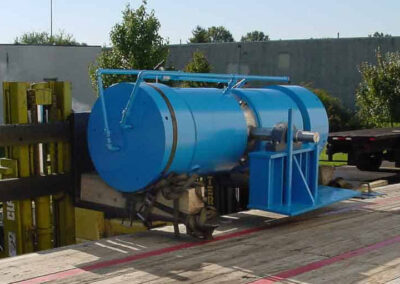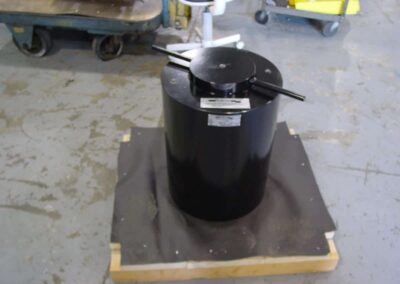Electroless Nickel Plating for Complex Geometries

In the realm of industrial manufacturing, the imperative of safeguarding metal components against wear and corrosion while preserving their structural integrity stands as paramount. A remarkable solution, widely acknowledged for striking this equilibrium, is Electroless Nickel (EN) plating. Particularly, when addressing the coating of intricate and convoluted shapes, EN plating emerges as an outstanding choice. In this article, we will explore the notable benefits of electroless nickel plating, its application to intricate machined parts, and how it enhances wear resistance, thwarts corrosion, boosts lubricity, and fortifies metal surfaces.
Understanding Electroless Nickel Plating
Before delving into the nuances of electroless nickel plating for intricate geometries, it's essential to grasp the fundamentals of this process. Unlike conventional electroplating, which employs an electrical current to deposit metal onto a substrate, electroless nickel plating relies on a chemical reaction to achieve uniform and precise metal deposition.
In this procedure, the metal component, typically composed of steel or titanium, is immersed in a bath containing specially formulated solutions with nickel salts and reducing agents. These chemicals interact to deposit a layer of a nickel-phosphorous alloy uniformly onto the component's surface, regardless of its shape or dimensions. The outcome is a corrosion-resistant and wear-resistant coating that faithfully conforms to the contours of the component, rendering it an ideal choice for intricate geometries.
Augmented Wear Resistance
A foremost advantage of electroless nickel plating lies in its remarkable ability to significantly augment wear resistance. Complex machined parts often undergo friction and abrasion during operation. EN plating engenders a resilient and enduring surface layer capable of withstanding these challenges, thereby extending the lifespan of the coated components.
Whether it involves intricate bore holes, gears, or tooling, EN plating furnishes a robust shield against wear, leading to reduced maintenance costs and minimized downtime. This attribute renders it particularly invaluable in industries such as automotive, aerospace, and oil and gas, where precision components endure demanding conditions.
Corrosion Mitigation
Corrosion represents a perennial adversary of metal components, particularly those exposed to severe environments or corrosive substances. Electroless nickel plating serves as a potent barrier against corrosion, safeguarding the integrity of the underlying material. The deposited nickel-phosphorous alloy creates a protective layer that resists the corrosive effects of moisture, chemicals, and atmospheric elements.
In industries where intricate geometries are commonplace, such as marine vessels and chemical processing, EN plating stands as a dependable choice for preserving the longevity and performance of metal components. Its corrosion-resistant attributes render it an excellent option for items like pumps, valves, and heat exchangers.
Elevated Lubricity
Lubricity, denoting a surface's ability to reduce friction and enable smooth movement, represents another benefit of electroless nickel plating. The microstructure of the deposited nickel-phosphorous alloy on metal parts can be tailored to achieve specific levels of lubricity, making it an ideal choice for components necessitating reduced friction, such as gears, bearings, and sliding parts.
The enhanced lubricity conferred by electroless nickel plating not only enhances the efficiency and lifespan of these components but also reduces the requirement for external lubricants, streamlining maintenance and trimming operating costs.
Strengthening of Metal Surfaces
Beyond its protective attributes, an electroless nickel plating service can assist in reinforcing the metal surfaces of your parts. A composite incorporating silicon carbide with the nickel-phosphorous alloy amplifies the substrate's hardness, enhancing its resistance to wear and impact. This proves especially advantageous for intricate machined parts subjected to heavy loads or mechanical stresses.
In applications where structural integrity holds paramount importance, such as aerospace and defense, EN plating plays a pivotal role in elevating the durability and reliability of critical components like landing gear, aircraft engine parts, and military hardware.
Specialized Metal Coating Services in Texas
As the demand for electroless nickel plating shops in TX continues to surge, it's imperative to recognize that not all metal plating services are created equal. Some specialize in precision coating of smaller parts, while others possess the expertise and infrastructure to handle larger components.
In Texas, a state renowned for its diverse industrial landscape, a variety of metal coaters and industrial metal plating facilities excel in offering electroless nickel plating services. These facilities often invest in cutting-edge equipment and employ seasoned technicians well-versed in the intricacies of EN plating for complex geometries.
When searching for metal coaters in Texas, it's crucial to consider the specific requirements of your project. Certain facilities may excel in the precision coating of intricate, smaller parts with consistent quality, whereas others may have the capacity and proficiency to handle larger components, ensuring the same level of excellence and performance.
Electroless nickel plating stands as a versatile and dependable solution for coating intricate machined parts and metal components. Its capacity to enhance wear resistance, thwart corrosion, elevate lubricity, and fortify metal surfaces positions it as a preferred choice across industries ranging from automotive to aerospace. When seeking nickel plating services in Texas, it is essential to choose a provider aligned with your project's demands, be it a specialist in precision coating or one equipped to handle larger components. Ultimately, electroless nickel plating retains its significance as an indispensable tool in the arsenal of industrial manufacturing, guaranteeing the longevity and efficacy of vital metal components.





